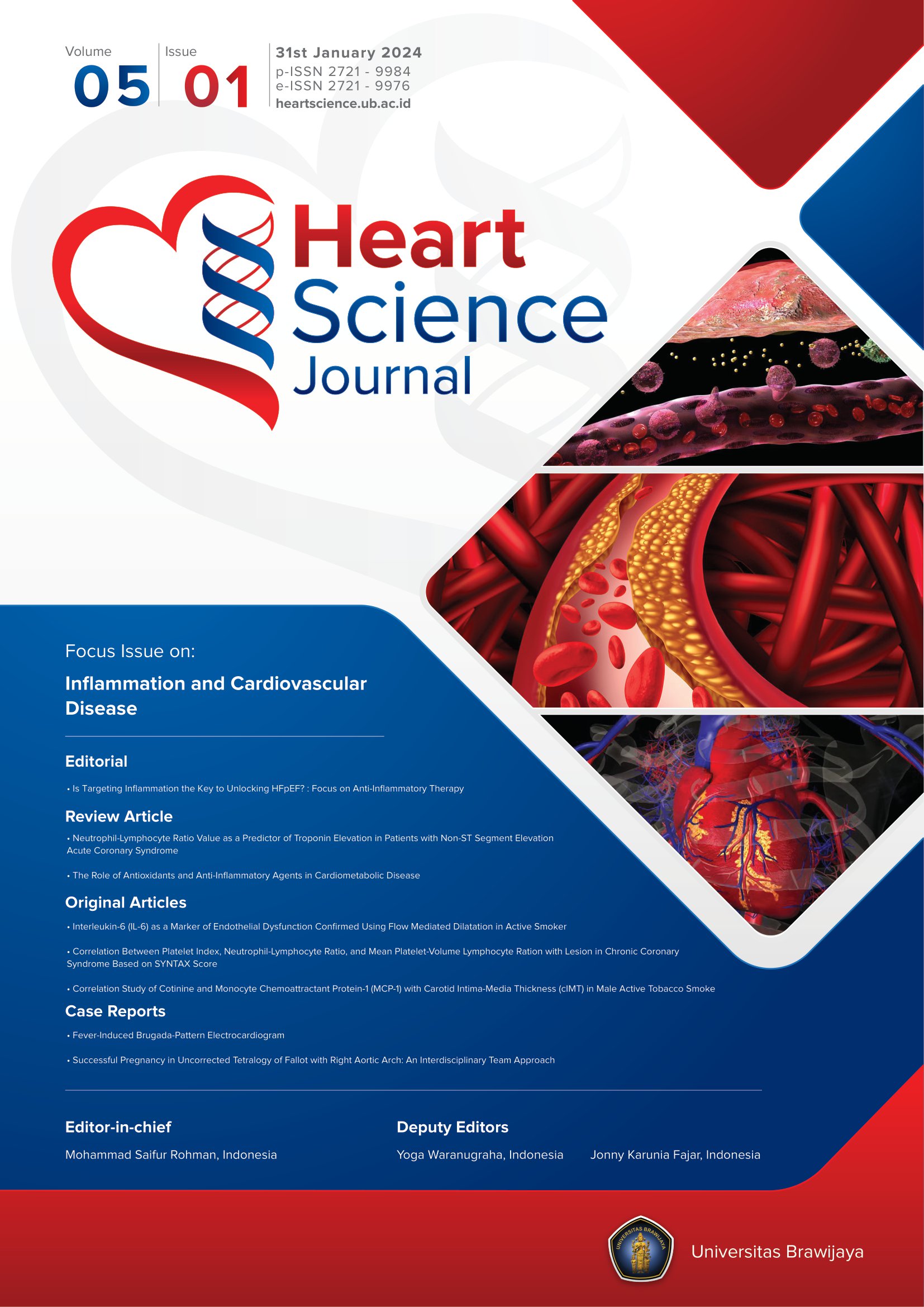Arteriovenous Fistula Stenosis: A Case Report
Abstract
Background
The arteriovenous fistula (AVF) is the preferred hemodialysis access type because it has better patency rates and fewer complications than other access types. Dialysis vascular access failure is common, is rated as a critical priority by both patients and health professionals, and is associated with excess morbidity, mortality, and healthcare costs.
Case Illustration
A 64 years old man with stage V CKD on routine HD was admitted to hospital with difficulty in cannulation during his last hemodialysis. He already had arteriovenous fistula for hemodialysis access in his left arm since 2 years ago. In the last month before admission, he went to surgery to make hemodialysis access via arteriovenous fistula in his right arm, but failed to mature. Vascular ultrasound on dialysis vascular access was ordered. The examination revealed there was stenosis in the juxta-anastomosis site and cephalic venous stenosis in his left arm. He underwent percutaneous angioplasty with POBA in the anastomose arteriovenous fistula and implantation stent in the left cephalic vein.
Discussion
Dysfunction of hemodialysis access is a major problem for patients undergoing hemodialysis. It is generally due to venous stenosis, which diminishes flow in the hemodialysis access arteriovenous, thereby leading to poor dialysis. Fistulas tend to develop stenosis most commonly either at the juxta-anastomosis site and the outflow vein. Peripheral venous stenosis is the most common cause of arteriovenous fistula dysfunction and may lead to access thrombosis. The first-line treatment of stenosis should be balloon angioplasty. Stent placement in the peripheral vein is generally not recommended except in special circumstances.
Conclusion
Hemodialysis vascular access is the “lifeline” for patients on hemodialysis. Vascular access-related complications can lead to patient morbidity and reduced quality of life. Surgery often cannot be provided as rapidly as a percutaneous approach. Catheter-based interventions are successful in restoring flow in more than 80% of hemodialysis accesses that undergo stenosis and have replaced surgical revision as the treatment of choice for failing or stenosed accesses
Keywords
Full Text:
PDFReferences
PERNEFRI. (2018). 11th Report Of Indonesian Renal Registry 2018 Pendahuluan. Irr, 1–46. Retrieved from https://www.indonesianrenalregistry.org/data/IRR 2018.pdf
Bikbov, Boris, et al. "Global, regional, and national burden of chronic kidney disease, 1990–2017: a systematic analysis for the Global Burden of Disease Study 2017." The Lancet 395.10225 (2020): 709-733.
Liyanage, Thaminda, et al. "Worldwide access to treatment for end-stage kidney disease: a systematic review." The Lancet 385.9981 (2015): 1975-1982.
Schmidli, Jürg, et al. "Vascular Access: 2018 Clinical Practice Guidelines of the European Society for Vascular Surgery (ESVS) 5." European Journal of Vascular and Endovascular Surgery (2018).
Thabet, Bahgat Abd El-Hamed, et al. "Complications of arteriovenous fistula in dialysis patients at Assiut University Hospital." Journal of Current Medical Research and Practice 2.2 (2017): 119.
Hudson, Rebecca, David Johnson, and Andrea Viecelli. "Pathogenesis and Prevention of Vascular Access Failure." Vascular Access Surgery-Tips and Tricks. IntechOpen, 2019.
Duque, Juan C., et al. "Dialysis arteriovenous fistula failure and angioplasty: intimal hyperplasia and other causes of access failure." American Journal of Kidney Diseases 69.1 (2017): 147-151.
Roy-Chaudhury, Prabir, Vikas P. Sukhatme, and Alfred K. Cheung. "Hemodialysis vascular access dysfunction: a cellular and molecular viewpoint." Journal of the American Society of Nephrology 17.4 (2006): 1112-1127.
Bittl, John A. "Catheter interventions for hemodialysis fistulas and grafts." JACC: Cardiovascular Interventions 3.1 (2010): 1-11.
Lok, Charmaine E., et al. "KDOQI clinical practice guideline for vascular access: 2019 update." American Journal of Kidney Diseases 75.4 (2020): S1-S164.
Beathard, Gerald A., Techniques for angioplasty of the arteriovenous hemodialysis access. (2017)
AIUM Practice Parameter for the Performance of Vascular Ultrasound Examinations for Postoperative Assessment of Hemodialysis Access. (2020). Journal of Ultrasound in Medicine
Abreo, Kenneth, Mary Buffington, and Bharat Sachdeva. "Angioplasty to promote arteriovenous fistula maturation and maintenance." The journal of vascular access 19.4 (2018): 337-340.
Agarwal, Shiv Kumar, et al. "Comparison of cutting balloon angioplasty and percutaneous balloon angioplasty of arteriovenous fistula stenosis: A meta‐analysis and systematic review of randomized clinical trials." Journal of interventional cardiology 28.3 (2015): 288-295.
Vasanthamohan, Lakshman, Prasaanthan Gopee-Ramanan, and Sriharsha Athreya. "The management of cephalic arch stenosis in arteriovenous fistulas for hemodialysis: a systematic review." Cardiovascular and interventional radiology 38.5 (2015): 1179-1185.
Vasanthamohan, Lakshman, Prasaanthan Gopee-Ramanan, and Sriharsha Athreya. "The management of cephalic arch stenosis in arteriovenous fistulas for hemodialysis: a systematic review." Cardiovascular and interventional radiology 38.5 (2015): 1179-1185.
Gallieni, Maurizio, et al. "Clinical practice guideline on peri-and postoperative care of arteriovenous fistulas and grafts for haemodialysis in adults." Nephrology Dialysis Transplantation 34.Supplement_2 (2019): ii1-ii42.
Tsukada, Hiroyuki, et al. "Pharmaceutical prevention strategy for arteriovenous fistula and arteriovenous graft failure." Renal Replacement Therapy 5.1 (2019): 22.
DOI: https://doi.org/10.21776/ub.hsj.2021.002.02.8
Refbacks
- There are currently no refbacks.
Copyright (c) 2021 Seprian Widasmara, Novi Kurnianingsih, Ardian Rizal, Sasmojo Widito

This work is licensed under a Creative Commons Attribution 4.0 International License.









